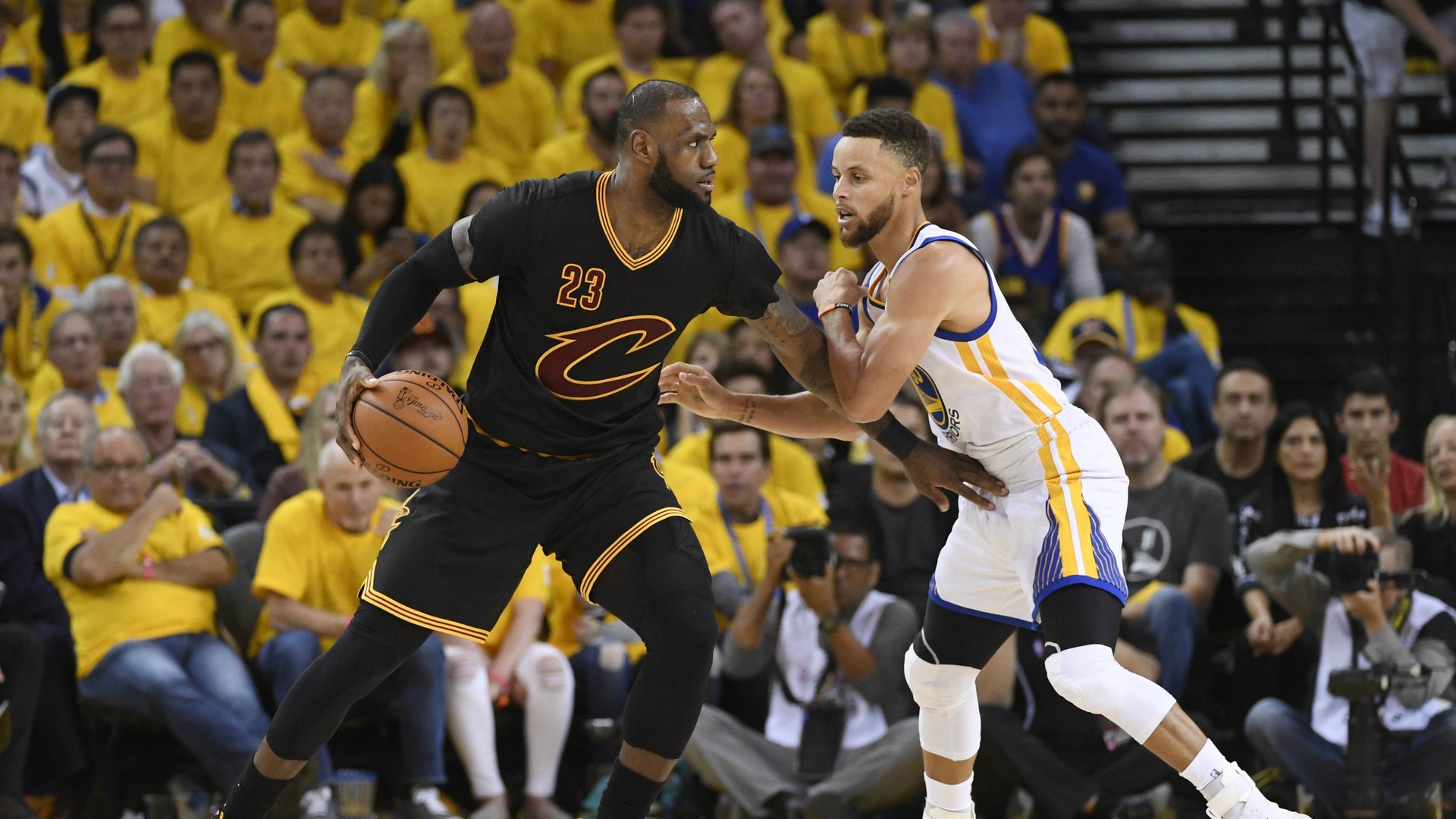Data analytics have made the NBA unrecognizable
It’s not your parent’s National Basketball Association. It’s not even really your older sibling’s. Over the last decade, data analysts have chewed up professional basketball and spit out an almost entirely new game.


It’s not your parent’s National Basketball Association. It’s not even really your older sibling’s. Over the last decade, data analysts have chewed up professional basketball and spit out an almost entirely new game.
The NBA has embraced statistics with a verve that may even surpass that of Major League Baseball, the first US sports league to let data into the locker room. Nearly every team in the NBA now has data analysts on their staff who work with coaches and player evaluators to maximize individual athlete’s talents and identify undervalued players. Many players use wearables and sleep monitors to track their fatigue levels in order to avoid injury. The NBA’s best team, the Golden State Warriors, credit much of their success to their analytics acumen. The league even runs an annual Hackathon to uncover new data analyst talent.
”Analytics are part and parcel of virtually everything we do now,” NBA commissioner Adam Silver said at an analytics conference held by Wharton School of Business earlier this year.
Basketball is a complicated sport to analyze. Unlike baseball, which is mostly made up of discrete contests between individuals in predictable locations, basketball involves five players on each team interacting with each other in an infinite number of ways. Historically, useful information, besides typical counting stats like points scored and assists made, was difficult to collect. But beginning in 2009, the league began using a video system that tracked the movement of every player on the court, and the ball, 25 times a second. These new data have pushed forward the league’s analytics movement, allowing data scientists to use machine learning and cartography to better assess which players were actually helping their team win.
Yet the most profound change to the NBA caused by analytics, the rise of the three-point shot, was a result of simple math. As recently as 2012, the average team took only 18.4 three-point shots per game. In 2017, teams took 27, a near 50% increase. The increased use of the three-pointer was largely a result of analysis showing that a three pointer that had only a 35% chance of going in still, on average, led to more points than a two-point jump shot taken closer to the basket. As a result, coaches have begun to encourage players with strong three-point shooting skills, like the Warriors’ Steph Curry, Klay Thompson, and Kevin Durant, to take the shot as often as possible.
More sophisticated analysis led to the other big change in the NBA. Teams are now much better at evaluating defense. Using the granular tracking data, analysts can now identify which players are best at altering or discouraging the most efficient types of shots (three-pointers and dunks). Analysts have also used the most sophisticated statistical techniques, like Bayesian networks, to establish how much better a team’s overall defense is when a given player is on the court.
All this has led to the near-extinction of certain types of players that were highly valued in the past. Teams are no longer as interested in players who take a lot of inefficient two-point shots, and don’t grade out as strong defenders. Also, all players are now expected to be good passers, who can identify which other players on the court might have an opportunity for an efficient shot.
In addition to changing the perception about which kinds of basketball players are most valuable, the NBA’s data revolution has also changed how much “valuable” players actually play. Teams are increasingly giving players days off, or playing them less, when data show they are at risk of injury. Silver has said that teams are even testing saliva for signs of fatigue.
The resting of star players has irked some fans who paid for tickets to these games at the start of the season, only to get stuck seeing a lineup of backups play. It’s good for the league, though, and the players, because it prolongs careers. Presumably, it should make overall gameplay better too: the NBA’s data revolution has created rosters of more skilled, more well-rounded players, and who are better rested when they do play.